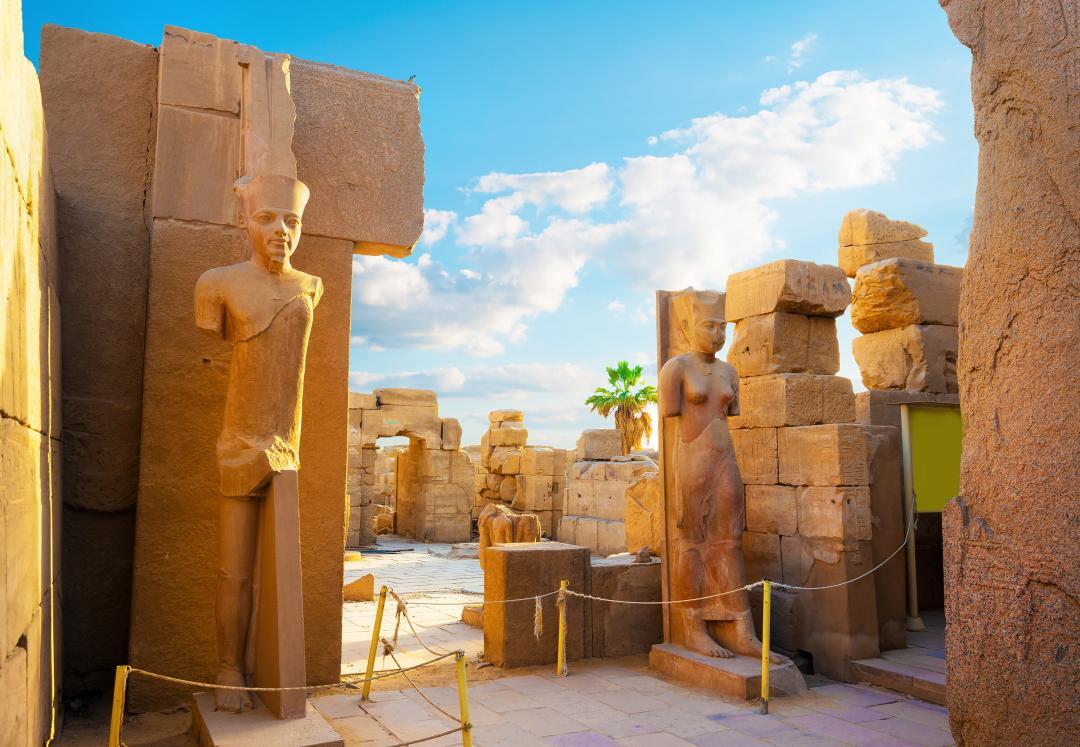
Ancient Egyptian Timeline
There is evidence of human activity in northeastern Africa since the Middle Pleistocene Period. By the Middle and Upper Paleolithic, between 90,000 and 10,000 years ago, hunter-gatherer populations gradually moved into the prehistoric Nile Valley, and the drying lake and savannah regions of the Eastern Sahara precipitated by climatic changes. Traces of these early peoples survive in the forms of stone tools and rock carvings on the higher terraces along the Nile (including the western Theban plateau) and in the oases. As the nomadic hunter-gatherers came to settle along the edges of the Nile Valley, a transition to a settled lifestyle dependent on agriculture took place.
Names for the various phases of Neolithic cultures were once based on type-sites where typical artifacts were first classified. For the Predynastic Period, the chronological/material culture divisions Badarian, Amratian, and Gerzean have been replaced and redefined as Naqada I, II, and III. These cultures developed in Upper Egypt and were roughly contemporary with but materially different from Neolithic cultures located in the Nile Delta and typified by such type-sites as Ma’adi and Marimdah, as well as in the Fayyum and at al Omari. There seems to have been a gradual influx of Upper Egyptian Neolithic material into Lower Egypt and Nubia.
Relations with neighboring peoples to the south, west, and northeast of Egypt included trade and warfare.
Pit graves were common throughout the Nile Valley, particularly in Upper Egypt (sites excavated in Lower Egypt are predominantly settlement sites), but gradually came to be replaced by more regular, rectangular chambers cut into bedrock and covered with small mounds of debris and, later, of mud-brick. Numerous grave goods indicate a belief in an afterlife and their uneven distribution in cemeteries already points to a stratified society.
In the Theban area, evidence of Naqada, I, and II structures and graves have been found at the site of El-Tarif, which is just southwest of the modern village of At-Tarif.
El-Tarif is a necropolis on the West Bank of the Nile, at the site of ancient Thebes (Luxor), Egypt. It is located in the northwestern outskirts of Luxor and southeast of the Valley of the Kings, opposite Karnak. It is the oldest of West Thebes’ necropolises.
So what is the actual ancient Egyptian timeline and just how old is ancient Egypt?
- Predynastic Period (Prehistoric Egypt) 6000-3150 BC
- Early Dynastic Period 3150–2686 BC
- Old Kingdom 2686–2181 BC
- 1st Intermediate Period 2181–2055 BC
- Middle Kingdom 2055–1650 BC
- 2nd Intermediate Period 1650–1550 BC
- New Kingdom 1550–1069 BC
- 3rd Intermediate Period 1069–664 BC
- Late Period 664–332 BC
- Greco-Roman Egypt 332 BC – 629 AD
- Medieval Egypt 641 AD – 1517 AD
- Early Modern Egypt 1517 – 1914
- Late Modern Egypt 1882 – Present
Share this:
- Click to share on Facebook (Opens in new window)
- Click to share on Pinterest (Opens in new window)
- Click to share on Twitter (Opens in new window)
- Click to share on Telegram (Opens in new window)
- Click to share on Pocket (Opens in new window)
- Click to share on WhatsApp (Opens in new window)
- Click to share on Reddit (Opens in new window)
- Click to share on LinkedIn (Opens in new window)
- Click to share on Tumblr (Opens in new window)
- Click to print (Opens in new window)

